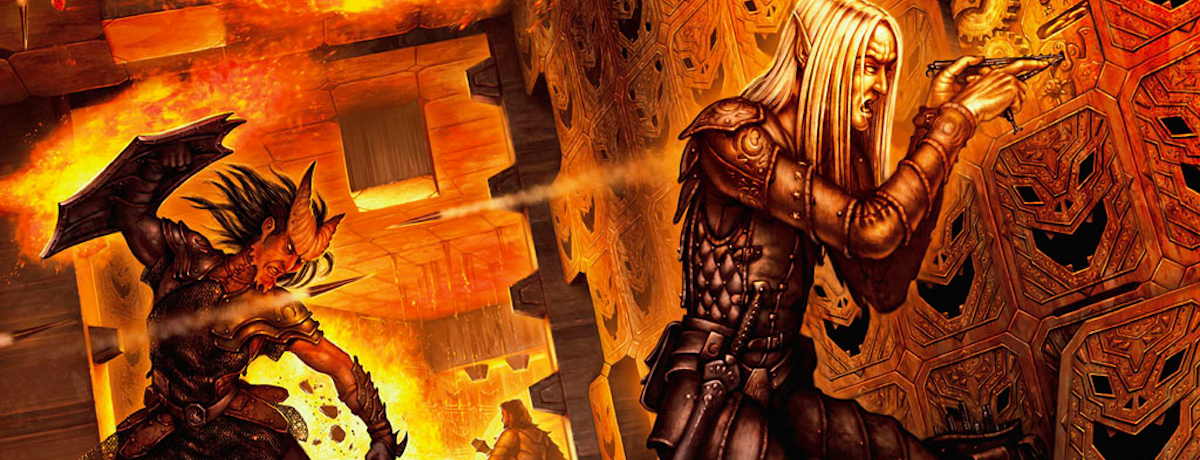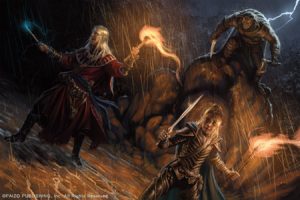“Progress Combined With a Setback”
Too often in RPGs, a failure on a roll simply means you’ve failed, and the GM moves onto the next player. However, failure isn’t always the end of things.
If we look at page 174 of the PHB, it states (when talking about failing a roll), “Otherwise, it’s a failure, which means the character or monster makes no progress toward the objective or makes progress combined with a setback determined by the GM.” This is way too often ignored by GMs, myself included.
Let’s take a look at how other systems implement this “fail forward” concept.
- PBTA: If you roll 6 or less, you completely fail. If you roll a 7-9, you achieve a partial success. This is where your ‘fail forward’ can be applied.
- Mouse Guard: When travelling, if you roll all the successes you need on a journey, you simply arrive at your location, but that’s no fun. So instead, failures lead to interesting situations. You’re delivering the mail, and a failure leads to a raven stealing the mail bag. You now have to get it back.
- Star Wars/Genesys: The Genesys system allows for complications with failures, as well as failures with a boost, based on what symbols show up on your dice. You can succeed at a test, and yet take strain for the effort. If you fail but with a boost, you can give advantage to your friends in later turns despite your failure.

While I was halfway through this article, I realized that the delightful James Haeck wrote a great article over on D&D Beyond on just this subject, and goes into some really fantastic detail and suggestions, but I wanted to talk about my own ideas.
A character makes a dive through a rapidly closing trap door and fails, so their hat is left behind, forcing them to reach beneath the door to try to grab it.
 The heroes are treking through the winding jungle, and when the ranger fails their Survival check. They aren’t lost and in fact know exactly where they are, but this is the point they end up with a random encounter.
The heroes are treking through the winding jungle, and when the ranger fails their Survival check. They aren’t lost and in fact know exactly where they are, but this is the point they end up with a random encounter.
The rogue manages to successfully deactivate the trap, but that triggers a trap further in the dungeon for the players to stumble upon later.
Even Perception checks can be interesting on a failure. Give players hints as to what they see or smell without giving them all the info. Perhaps their failed Perception lets them see a writhing tentacle around the corner, but they can’t make out exactly what it is. Maybe in the forest, you tell them it’s a bear they see in the dim light, when it’s actually an owlbear. Too often, when a players fails, the GM just says, “You don’t see anything.”
Definitely check out that D&D Beyond article for even more and better ideas than I have. I know I’ll be making sure to add it to my arsenal.

